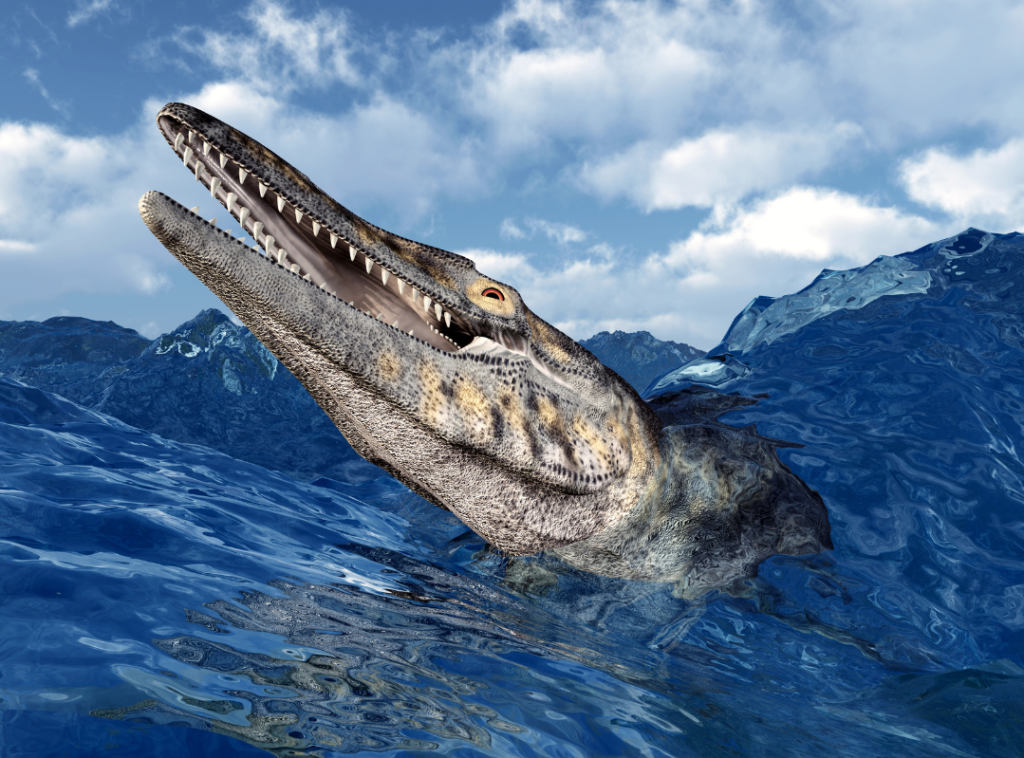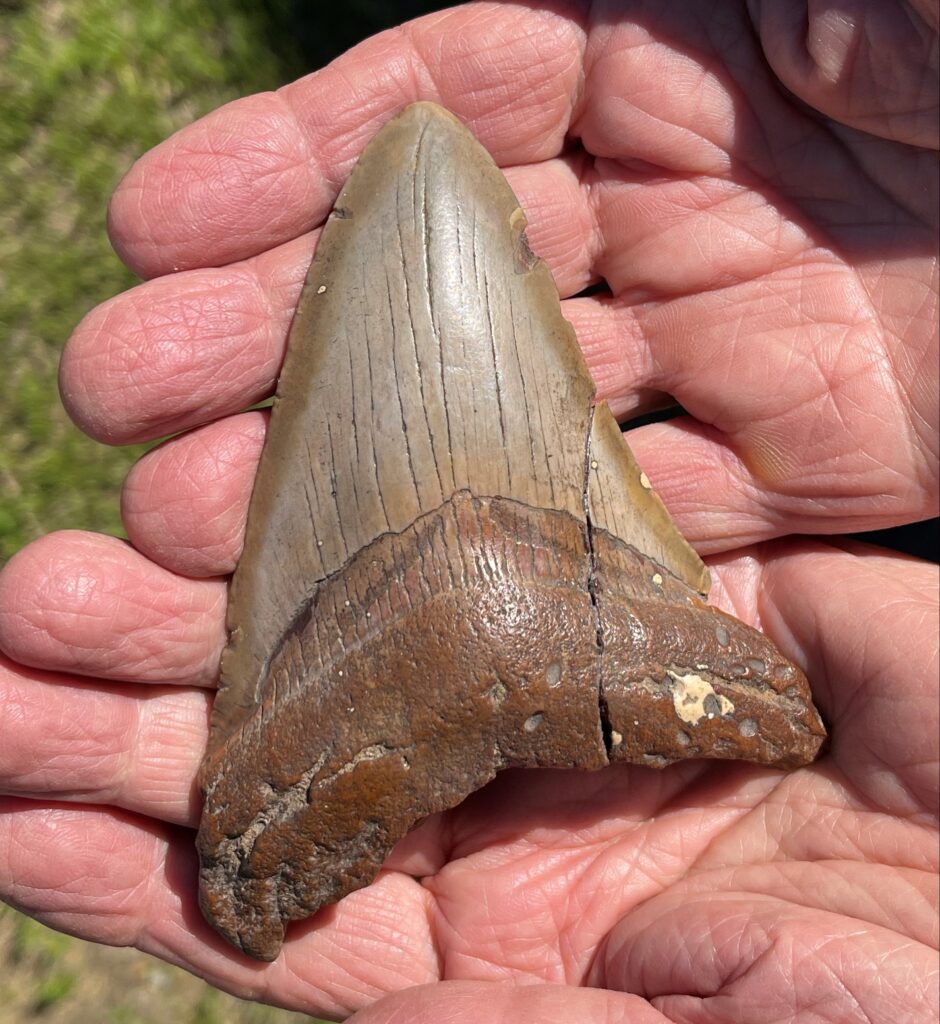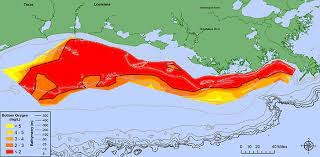An Ocean Disaster and Recovery
Once upon a time, some 80 million years ago, the center of the continent we now call North America was a shallow seaway. Its waters were relatively warm, and algae and other plants were busy extracting large amounts of calcium from the water. Combined with carbon dioxide from the atmosphere, this sea was loaded with fine calcareous sediment deposited as limey mud, overall quite similar to the situation today in Florida Bay. These muds slowly solidified by recrystallization to become a soft, chalky limestone.
Amongst the animals that lived in this shallow sea were the mosasaurs, a group of marine lizards which had evolved streamlined bodies propelled by a powerful tail that allowed them to hunt fish. Some were slender, shaped like an eel with fins, others were muscular and streamlined like a modern dolphin. Given the buoyancy provided by seawater, they could evolve sturdy bones, as have modern whales.

A 3D rendering of a Tylosaurus. This species could grow huge; up to 50 feet long and weigh an estimated 10 tons./Getty Images
Today, we call this place Kansas, and the ancient seafloor has become the local bedrock. The Niobrara Chalk is especially rich in fossil mosasaurs and their sturdy bones are readily exposed by carving away the soft chalk with little bone damage or breakage. Consequently, most museums in this country have a small one on display. The big ones are a major mining project to excavate and require much space to display. Because so many mosasaurs have been excavated, we know a bit about them. Their all-aquatic design doesn’t look like they could conveniently come ashore to lay eggs, as do other aquatic reptiles like sea turtles and crocodiles. And indeed a few mosasaur fossils have been found with miniature mosasaurs in the birth canal, fully formed and ready to be born at sea, a big deal for air breathing animals.

The University of Iowa mosasaur in Trowbridge Hall. This particular specimen died upside down and I am pointing to its lower jaw with a set of serious teeth. The rib cage had already mostly eroded away, exposing it’s spinal column, somewhat disarticulated.
The mosasaur group appears to have evolved from land-based reptiles similar to todays monitor lizards. Feet gradually evolved into fins and tails and grew flattened vertically for propulsion with a strong side-to-side motion. On land, their ancestral group also evolved into snakes, which are streamlined for propulsion through vegetation and rocks also using a side-to-side motion. The world of the mosasaurs and other aquatic reptiles, as well as the terrestrial dinosaurs, ended abruptly with the impact of a large meteorite some 65 million years ago. See my past blog for a few details about the Great Extinction.
For some 10 million years after this event, the geologic record reveals no really big predators replacing the mosasaur clan in the oceans, although some of the surviving shark groups are becoming larger. But by 15 million years after the event, some small carnivorous mammals had evolved into whales and dolphins, some similar to those of today. Unlike the big reptiles, these mammals’ hip structure lead to propulsion with tail flukes that pump up and down. The newcomers also mastered live birth at sea.
As the whales grew into being the big predators of the seas, so did the sharks. Shark skeletal structures are made of cartilage and do not preserve well in the geologic record, so we only have a little direct information about their size and shape. But their teeth are made the same as modern sharks, with the meat-eaters teeth being triangular blades, often serrated, and these fossilized well. Some of these ancient sharks of the early whale era had enormous teeth, and we surmise that these sharks were the size of the huge mosasaurs which preceded them, and played a similar role.

A fossil shark tooth from around 45 million years ago, from the Atlantic coastal plain of South Carolina.
So how did a meteor impact in the Gulf of Mexico kill off mosasaurs around the world? The general answer appears to be that it ruined the food chains they depended on. The impact, along with similarly timed volcanism, likely created more acidified oceans, more sulfur, soot and haze in the atmosphere, smaller fish populations, more isolated adults … a scary litany with many parallels to today’s oceanic world. It is especially ironic that we today are crating a dead zone in the Gulf of Mexico, a problem that begins here in our own ecosystem.



